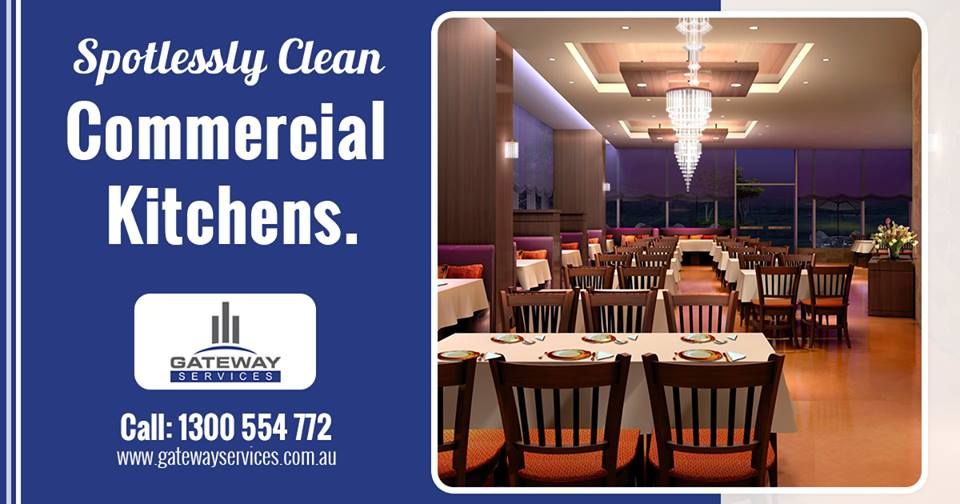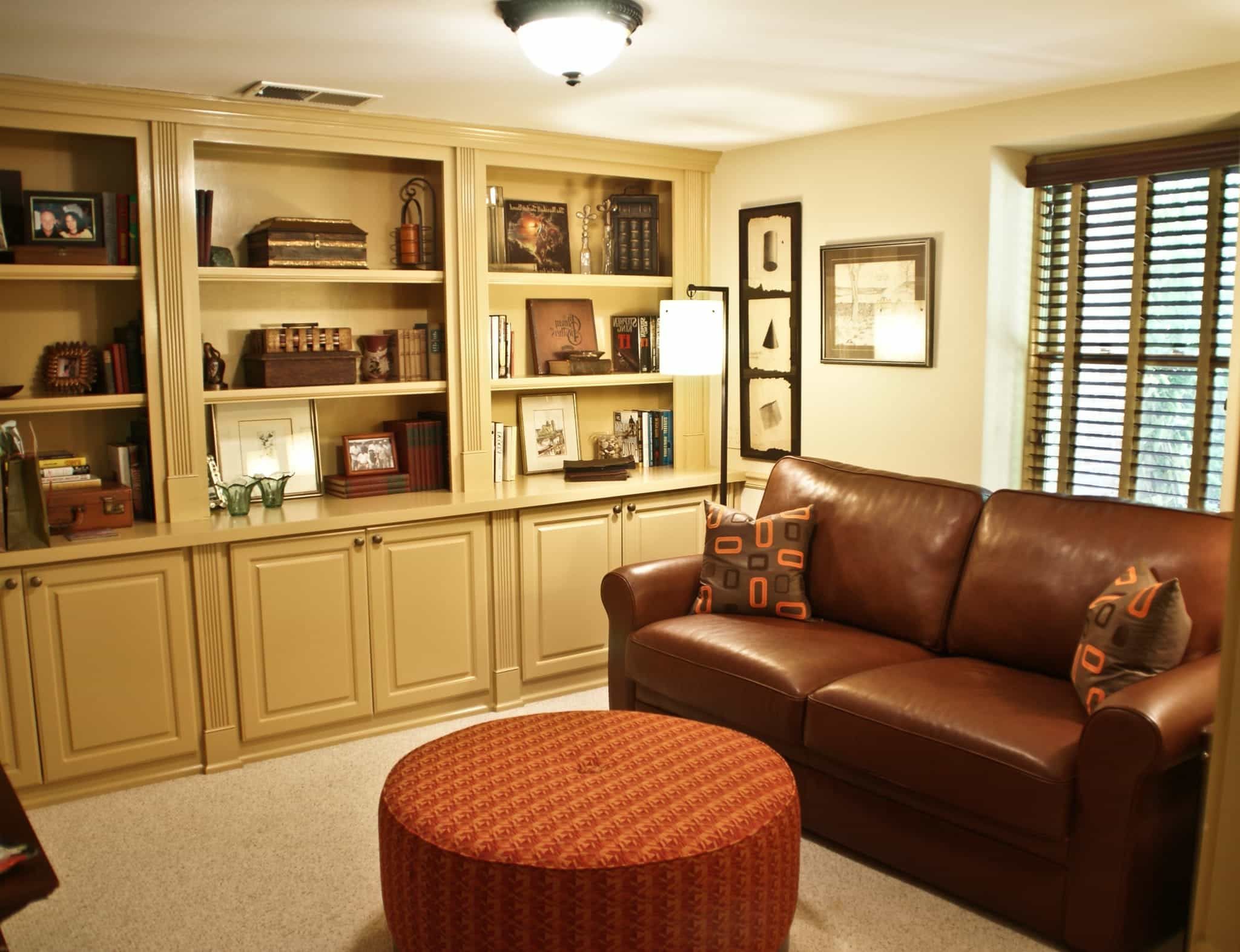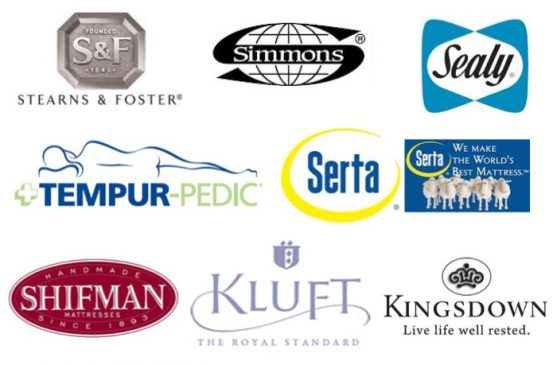It is essential to have a well-designed and efficient kitchen for any restaurant if you want to make sure that your dishes are cooked properly and to the standard that your customers expect. A well-planned restaurant kitchen design should ensure that food is prepared quickly and safely, allowing you to maximize efficiency and increase profits. Some tips to help you design your restaurant kitchen include: Identifying the Kitchen Zones: The kitchen should be divided into a series of zones or areas, such as a food preparation area, a hot food serving area, and a cold food storage area. This will help to ensure that staff can easily access the necessary equipment and ingredients in the correct zone. Selecting the Right Equipment: Careful consideration should be given to the type of equipment needed and where it should be placed in order to make the most efficient use of the space. For example, the refrigeration and cooking equipment should be located close to the working zone to allow staff to quickly move to the next step in the process. Focusing on Efficiency: Efficiency is key for any successful restaurant kitchen. Consider the type of layout that would best suit your needs. Do you need to optimize movement and create a ‘hub and spoke’ system? Do you need to design an open or a closed kitchen? How about ergonomic considerations to make sure that staff can complete their daily tasks without any discomfort? Making the Most Out of the Space: There is always a need to make the best use of the available space. When planning for your kitchen design, you will need to think about how to squeeze in all the necessary equipment and how to make sure that it is easy to clean and store away. Tips for Restaurant Kitchen Design
When planning for your restaurant kitchen design, it is important to keep in mind the basics, such as the available space, the type of equipment needed, and the layout of the kitchen. The layout should be designed to make sure that staff can easily talk to each other and move between the various workstations. Additionally, the flow should be designed to avoid any type of traffic congestion or clashes between the guests and the staff. allocating work Areas: The first step in designing an efficient restaurant kitchen is to allocate specific work areas for different tasks. This includes creating a food preparation area, a cold food storage area, and a hot food serving area. Additionally, you may want to have a separate washing up area and a separate storage area for items such as plates and cutlery. considering Air Flow: When planning for your restaurant kitchen design, it is important to consider the air flow. For example, the wall exhaust systems should be placed in a way that will prevent smoke and greasy steam from entering the dining area. Additionally, you need to consider the amount of cooking equipment that will be needed, as this can affect the air flow in the kitchen. Selecting the Right Equipment: Careful thought should be given to the type of equipment that you will need for the restaurant kitchen. For example, the size of your kitchen and the number of staff members you have will determine the size and type of equipment that you need. Additionally, consider the heating requirements of each piece of equipment as this will impact overall efficiency. Optimizing Kitchen Space: Once you have determined the layout and the type of equipment you need, it’s time to optimize the space in the kitchen. Look for ways to make more efficient use of the available space, such as adding shelves and cabinets, and reorganizing the workstations. You should also consider the most efficient way to store food items, as this can make a significant difference to the overall efficiency. The Basics of Kitchen Design for Restaurants
Creating an efficient restaurant kitchen design involves careful planning and an understanding of the basics. The layout of the kitchen should be designed in a way that optimizes movement and efficiency. This means that each zone should be optimized for its specific function, such as the cold food storage area, the food preparation area, and the hot food serving area. Additionally, certain areas in the kitchen can be used for multiple purposes. For example, the cold food storage area can be used for both storage and preparation. Creating a Hub and Spoke System: The hub and spoke design is one of the most efficient layouts for a restaurant kitchen whether it is for a large or a small kitchen. This layout involves creating a central area in the middle with several ‘spokes’ leading out from it. This will allow staff to quickly navigate to the various sections of the kitchen, optimizing movement and ensuring that all areas are accessible. Using Ergonomic Considerations: When designing the layout for your restaurant kitchen, ergonomic considerations should be taken into account. This will help to ensure that staff can move around the kitchen without any discomfort, and can maximize efficiency while reducing the risk of injury. This includes considering the type of flooring, countertops, and lighting that are necessary. Optimizing Small Kitchen Spaces: To optimize a small kitchen space, the layout should focus on efficiency and safety. To do this, consider using equipment such as ovens and refrigerators that are self-contained, meaning that they do not take up too much counter and floor space. Additionally, consider using a pass-through window or sliding shelves so that staff can move between the different sections without having to move around the kitchen. Efficient Restaurant Kitchen Design
For small restaurants, space is always at a premium. So, when it comes to designing an efficient kitchen, it is essential to make the most out of the available space. An efficient kitchen layout will optimize movement and ensure that staff are able to do their jobs quickly and safely. choosing Compact Equipment: When designing a small kitchen, it is essential to choose the equipment that is tailored to the size of the space. Consider selecting compact equipment that will not take up too much space, such as self-contained ovens and refrigerators. Additionally, think about investing in multi-functional items such as combination ovens. Designing for Efficiency and Safety: Efficiency and safety should be the main considerations when designing a small commercial kitchen. The design should allow staff to quickly and easily move between the different sections of the kitchen. Additionally, ergonomic considerations such as the height of the countertops should be taken into account. Using Storage Space Wisely: In a small kitchen, storage is often an issue. Consider using pull-out shelving, rotating shelves, or self-storing equipment, such as combination ovens and refrigerators. Additionally, think about installing racks and hooks in the ceilings to maximize the storage space. Ensuring Adequate Ventilation: Adequate ventilation is crucial for any kitchen, but even more so in a small kitchen. Poor ventilation can lead to smoke and odors, causing discomfort to staff and guests. Consider installing an exhaust hood and make sure that there is plenty of air circulation in the kitchen. Small Commercial Kitchen Design for Restaurants
When planning for your restaurant kitchen design, it is essential to consider the type of equipment that is necessary. In order to make sure that your restaurant is operating efficiently, you will need to choose the right equipment and make sure that it is placed in the right location. Below is a list of essential restaurant equipment that you should consider: Ovens: Ovens are an essential piece of equipment for any restaurant kitchen. There are a variety of different ovens available, including standard gas ovens, convection ovens, and combination ovens. Consider the size and type of oven that you need for your kitchen. Refrigerators: Refrigerators are an essential piece of equipment for any restaurant, as they are used to store food items and keep them at a safe temperature. When selecting a refrigerator, consider the size, features, and placement of the unit. Additionally, you should look for a unit with enough storage space to accommodate the size of your kitchen. Prep Tables: Prep tables are essential for any restaurant kitchen. These tables are used to prepare food and to store ingredients and utensils. When selecting a prep table, think about the type of material that you would prefer. Additionally, make sure that the table can be easily adjusted to various heights and is easy to clean. Sinks: Sinks are used for a variety of tasks, such as washing and prepping ingredients, cleaning utensils, and clearing away debris. When selecting a sink, consider the size and the type of material that it is made from. Additionally, think about adding multiple sinks so that staff can quickly move from one task to the next. Essential Restaurant Equipment List
Designing a restaurant kitchen involves creating a layout that is efficient and easy to use. To do this, consider some of the following layout ideas for your restaurant kitchen: The Straight Line Layout: A straight line layout is a simple but effective way of creating an efficient kitchen. This involves creating a line of appliances and workstations running from one side to the other side of the kitchen. This layout will allow staff to move quickly and easily from one area to the other. The U-Shaped Layout: The U-shaped layout is a popular layout for larger restaurants. This includes creating multiple stations that are arranged in a U-shape. By creating a series of ‘zones’ within the kitchen, it is easier for staff to move between the different tasks without getting in each other’s way. The Pass-Through Layout: The pass-through layout involves creating a corridor that connects the kitchen to the front of the restaurant. This allows staff to easily move from the kitchen to the dining area without having to move around the restaurant. Additionally, this layout offers the benefit of creating a dedicated area for the server station. The Hub and Spoke Layout: The hub and spoke layout is one of the most efficient layouts for any kitchen. This involves creating a central area that is surrounded by several ‘spokes’ that lead to different sections of the kitchen. This will help to minimize the time spent traveling between the different sections of the kitchen. Restaurant Kitchen Layout Ideas
When designing a kitchen for a restaurant, it is essential to ensure that health and safety considerations are taken into account. A well-designed kitchen layout should minimize the potential for accidents and injuries, while also ensuring that food is prepared in a safe and hygienic environment. Some health and safety procedures that you should consider include: Ensuring Adequate Lighting: Adequate lighting is essential for any kitchen, as it helps to ensure that staff can see what they are doing and reduces the risk of accidents. Consider installing lights in the food preparation area, the cooking areas, and the ceiling for overall illumination. Using the Right Flooring: The right type of flooring is essential for any kitchen and should be chosen with safety in mind. For example, non-slip vinyl or rubber flooring is best for the kitchen, as it reduces the risk of slips and falls. Additionally, the flooring should be easy to clean and maintain. Adhering to Food Handling Guidelines: All staff members in the kitchen should adhere to strict food handling guidelines to ensure that food is prepared safely. This includes following specific guidelines for cleaning, storage, and preparation of food items, and properly disposing of any waste materials. Providing Protective Gear: Staff members in the kitchen should be provided with the necessary protective gear, such as aprons, gloves, and fire retardant jackets. This will help to reduce the risk of exposure to harmful substances and minimize the risk of burns and other injuries. Health and Safety Procedures for Restaurant Kitchens
When planning for your restaurant kitchen design, it is important to consider the size of the kitchen and the type of layout that will best suit your needs. Generally, the ideal dimensions for a restaurant kitchen are between 24 ft x 12 ft and 16 ft x 30 ft. However, the size of the kitchen will depend on the number of staff members that will be working in the kitchen, the type and size of the equipment, and the overall layout. Considering Space Requirements for Equipment: Before deciding on the size of the kitchen, consider the space requirements for any kitchen equipment that you will be installing. The size and type of equipment will determine the amount of space that will be needed for it to operate safely and efficiently. Ensuring Adequate Storage Space: The kitchen should also be designed to provide enough storage for all the necessary equipment and ingredients. For example, consider installing shelves and cabinets to maximize the space for storage, or choose equipment with built-in storage compartments to make better use of the space. Ensuring Adequate Walkway Space: Additionally, consider the amount of walkway space that will be needed in the kitchen. This will determine the layout of the kitchen and the amount of traffic congestion that can occur. Generally, a minimum clearance of 3 ft is recommended, but this can vary depending on the type of equipment that is installed. Creating an Efficient Layout: It is important to create an efficient layout that will optimize movement and reduce any potential traffic congestion. Consider designing the kitchen with a ‘hub and spoke’ system or a ‘U’ shaped layout, which will minimize the need for staff to move around the kitchen unnecessarily. Ideal Restaurant Kitchen Dimensions
Maintaining a clean and hygienic environment in your restaurant kitchen is essential if you want to make sure that your food is prepared in a safe and healthy way. Below are some tips to help you keep your restaurant kitchen clean:Restaurant Kitchen Cleaning Tips
Restaurant Layout and Kitchen Design
 Planning your restaurant layout and kitchen design isn't always easy. In any commercial kitchen design there are many components to consider such as work flow, spacing requirements, equipment needs and storage. Knowing how these components fit together in the optimal configuration is key to successful
restaurant
design.
For restaurants, cooking space and food preparation is a key factor in the design of an efficient kitchen layout. To ensure that the food is cooked efficiently, a
kitchen
design needs to provide adequate space for the equipment, be planned to accommodate adequate storage to prevent equipment from being overloaded, and provide enough counter space for food preparation.
Additionally, the design of a restaurant kitchen must also take into account the safety of workers. In foodservice establishments, workers must be protected from potential dangers such as flames, hot surfaces, sharp edges, and hazardous chemicals. Taking safety precautions into consideration while planning a
restaurant layout
is essential for a successful kitchen design.
To ensure that the kitchen design is both efficient and safe, the design process should begin even before a professional designer is hired. The first step is to decide on the layout of the
kitchen
by considering the space available, the type of cooking that will be done, and the type of equipment that will be needed. Once these decisions have been made, it is important to create a floor plan that allows for easy flow and optimum use of space.
Planning your restaurant layout and kitchen design isn't always easy. In any commercial kitchen design there are many components to consider such as work flow, spacing requirements, equipment needs and storage. Knowing how these components fit together in the optimal configuration is key to successful
restaurant
design.
For restaurants, cooking space and food preparation is a key factor in the design of an efficient kitchen layout. To ensure that the food is cooked efficiently, a
kitchen
design needs to provide adequate space for the equipment, be planned to accommodate adequate storage to prevent equipment from being overloaded, and provide enough counter space for food preparation.
Additionally, the design of a restaurant kitchen must also take into account the safety of workers. In foodservice establishments, workers must be protected from potential dangers such as flames, hot surfaces, sharp edges, and hazardous chemicals. Taking safety precautions into consideration while planning a
restaurant layout
is essential for a successful kitchen design.
To ensure that the kitchen design is both efficient and safe, the design process should begin even before a professional designer is hired. The first step is to decide on the layout of the
kitchen
by considering the space available, the type of cooking that will be done, and the type of equipment that will be needed. Once these decisions have been made, it is important to create a floor plan that allows for easy flow and optimum use of space.
Creating an Efficient Kitchen Design
 Creating a kitchen design that is efficient and meets all the needs of the restaurant is not easy. Professional kitchen designers must take into account the type and quantity of food being cooked, the type of equipment needed, safety considerations, and available space when creating an effective kitchen design.
Professional kitchen designers can help the owner or manager of a restaurant create an efficient kitchen design that meets all of the requirements of the kitchen. A professional designer will be able to create a layout and plan that maximizes the use of the available space and creates an optimal environment for food preparation and cooking.
When deciding on a kitchen design, consider all of the elements that make up a successful restaurant kitchen layout. It is important to consider the flow of the kitchen, the necessary equipment, storage requirements, and safety considerations. With an efficient kitchen design, it is possible to increase productivity, improve safety, and create a pleasant work environment.
Creating a kitchen design that is efficient and meets all the needs of the restaurant is not easy. Professional kitchen designers must take into account the type and quantity of food being cooked, the type of equipment needed, safety considerations, and available space when creating an effective kitchen design.
Professional kitchen designers can help the owner or manager of a restaurant create an efficient kitchen design that meets all of the requirements of the kitchen. A professional designer will be able to create a layout and plan that maximizes the use of the available space and creates an optimal environment for food preparation and cooking.
When deciding on a kitchen design, consider all of the elements that make up a successful restaurant kitchen layout. It is important to consider the flow of the kitchen, the necessary equipment, storage requirements, and safety considerations. With an efficient kitchen design, it is possible to increase productivity, improve safety, and create a pleasant work environment.











































































